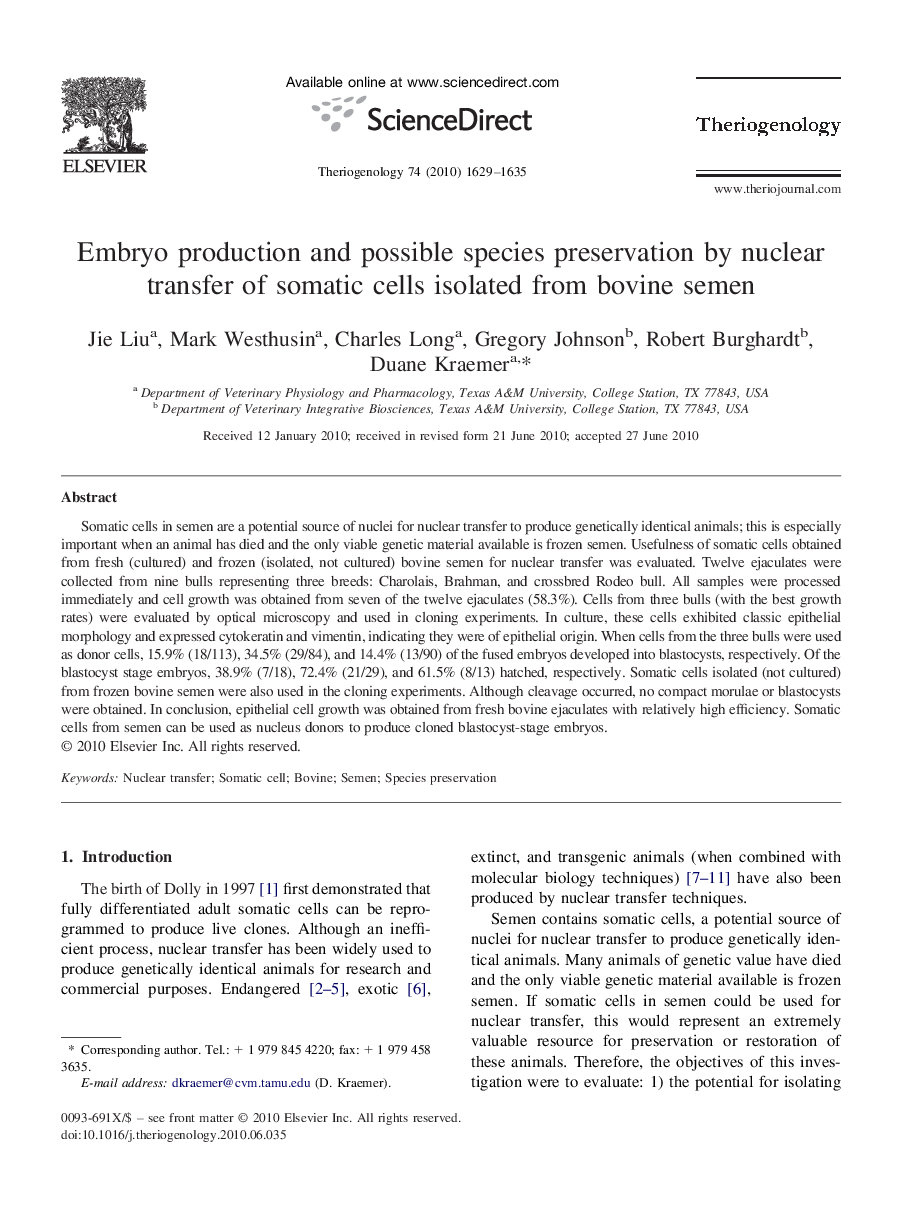| کد مقاله | کد نشریه | سال انتشار | مقاله انگلیسی | نسخه تمام متن |
|---|---|---|---|---|
| 2096185 | 1082156 | 2010 | 7 صفحه PDF | دانلود رایگان |

Somatic cells in semen are a potential source of nuclei for nuclear transfer to produce genetically identical animals; this is especially important when an animal has died and the only viable genetic material available is frozen semen. Usefulness of somatic cells obtained from fresh (cultured) and frozen (isolated, not cultured) bovine semen for nuclear transfer was evaluated. Twelve ejaculates were collected from nine bulls representing three breeds: Charolais, Brahman, and crossbred Rodeo bull. All samples were processed immediately and cell growth was obtained from seven of the twelve ejaculates (58.3%). Cells from three bulls (with the best growth rates) were evaluated by optical microscopy and used in cloning experiments. In culture, these cells exhibited classic epithelial morphology and expressed cytokeratin and vimentin, indicating they were of epithelial origin. When cells from the three bulls were used as donor cells, 15.9% (18/113), 34.5% (29/84), and 14.4% (13/90) of the fused embryos developed into blastocysts, respectively. Of the blastocyst stage embryos, 38.9% (7/18), 72.4% (21/29), and 61.5% (8/13) hatched, respectively. Somatic cells isolated (not cultured) from frozen bovine semen were also used in the cloning experiments. Although cleavage occurred, no compact morulae or blastocysts were obtained. In conclusion, epithelial cell growth was obtained from fresh bovine ejaculates with relatively high efficiency. Somatic cells from semen can be used as nucleus donors to produce cloned blastocyst-stage embryos.
Journal: Theriogenology - Volume 74, Issue 9, December 2010, Pages 1629–1635